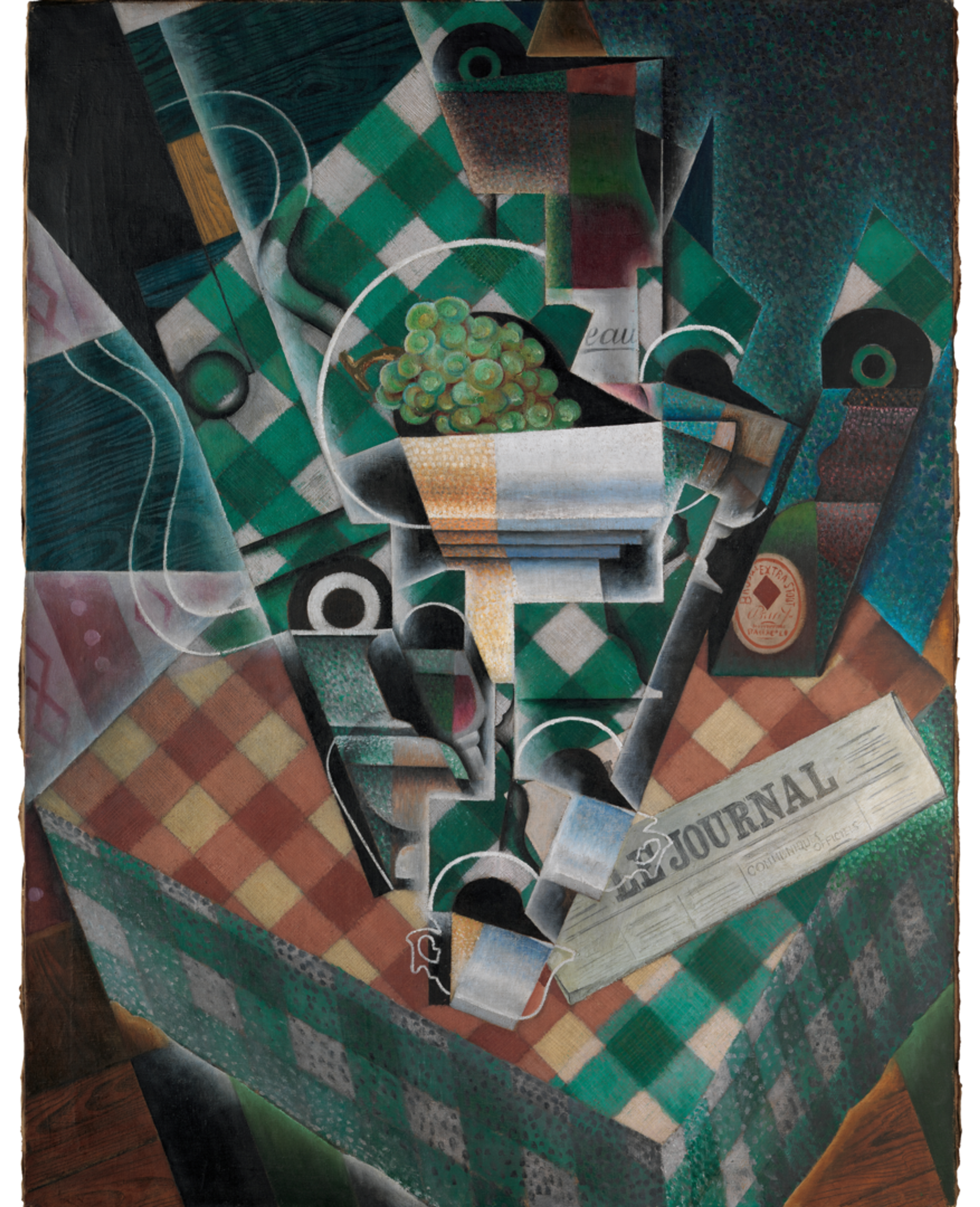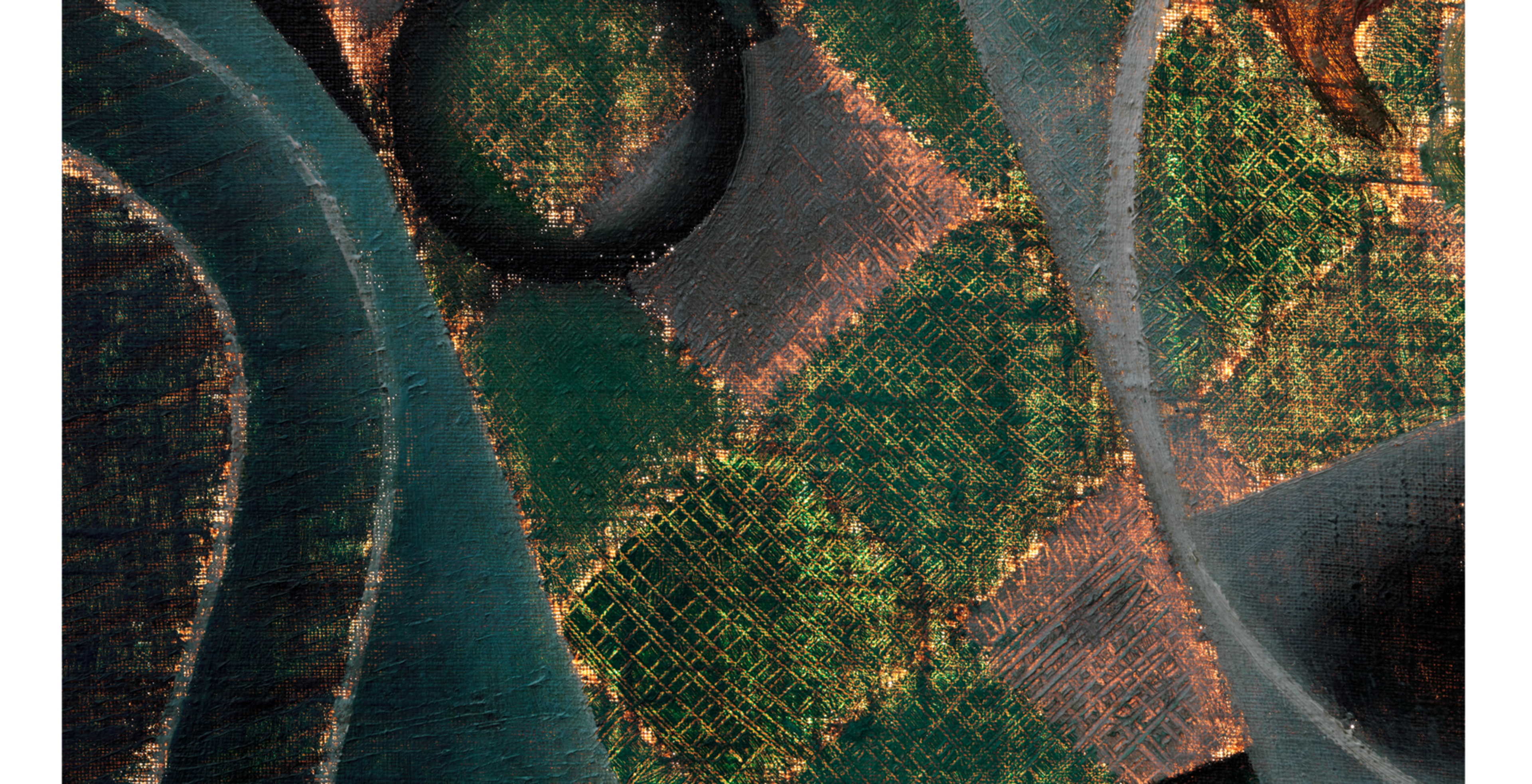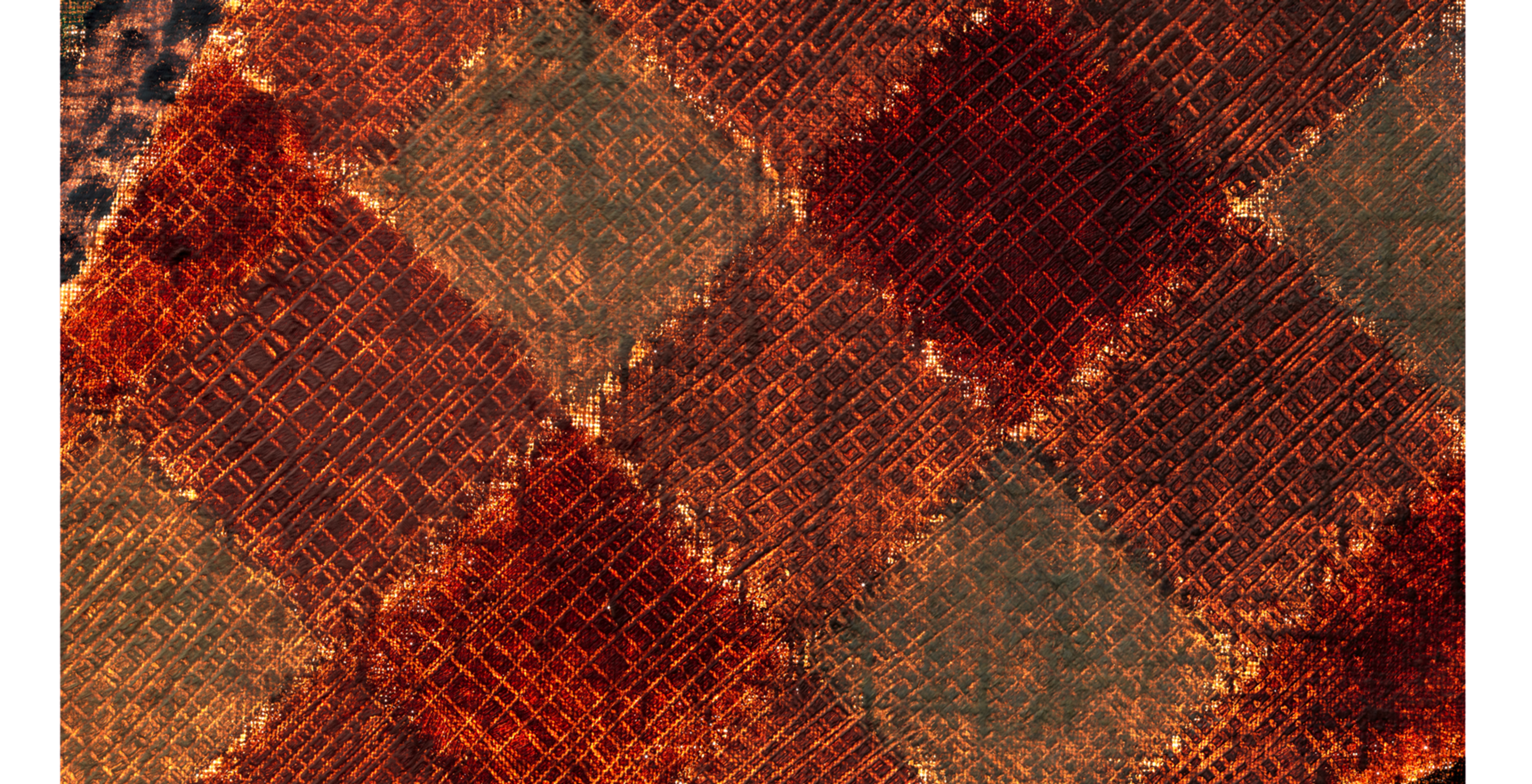
Juan Gris (1887–1927), Still Life with Checked Tablecloth, 1915. Oil on canvas, 45 7/8 x 35 1/8 in. (116.5 x 89.2 cm). The Metropolitan Museum of Art, Leonard A. Lauder Cubist Collection, Purchase, Leonard A. Lauder Gift, 2014 (2014.463)
Juan Gris painted Still Life with Checked Tablecloth directly onto the canvas without applying a ground layer beforehand. For centuries, artists have used such layers to create a smooth surface on which to paint. Traditionally composed of a combination of chalk, pigments, glue, and/or oil, a ground layer also prevents the canvas from absorbing the oil medium, which can cause fibers to deteriorate over time. Because there is no ground layer on this canvas and because the paint layer was thinly applied, areas of exposed canvas, especially along the outlines of forms, are clearly visible when the painting is viewed with transmitted light (FIG. 1). The absence of a white ground layer also contributes to the overall subdued tonality of the paint layer.
Infrared examination reveals that Gris first drew his composition with pencil and charcoal onto the canvas. The final composition shows almost no changes from his initial drawing, suggesting that he probably made preparatory sketches. In the area of the tablecloth, for example, it is clear that Gris first drew the checkered design in pencil before painting within each square. He then vigorously scored the paint with a sharp tool while it was still fresh in order to more faithfully emulate the weave pattern of the tablecloth (FIG. 2).

Fig. 1 Detail, top left, of Still Life with Checked Tablecloth as viewed with transmitted light.

Fig. 2 Detail of the red and yellow tablecloth in Still Life with Checked Tablecloth, as viewed with transmitted light.
